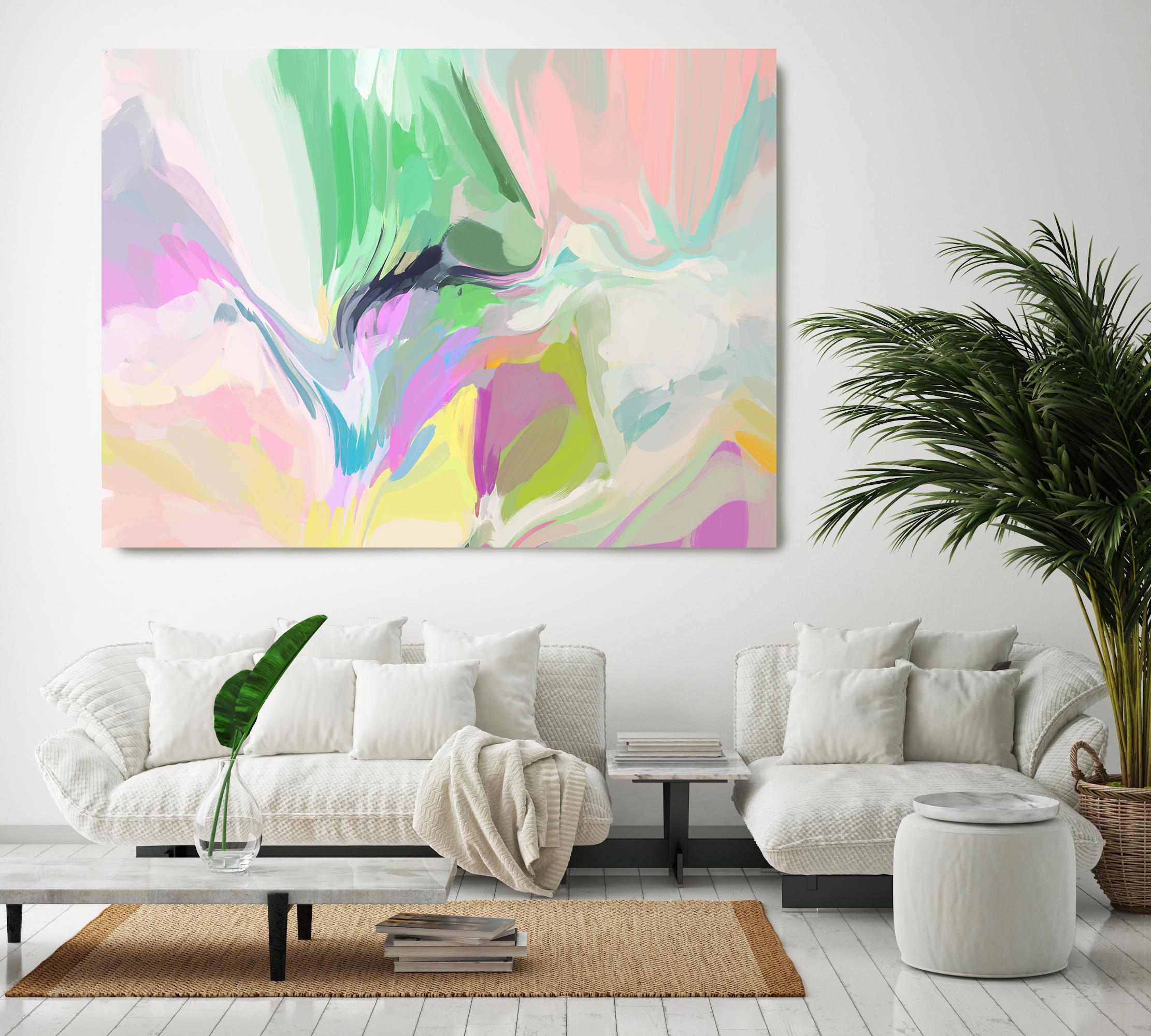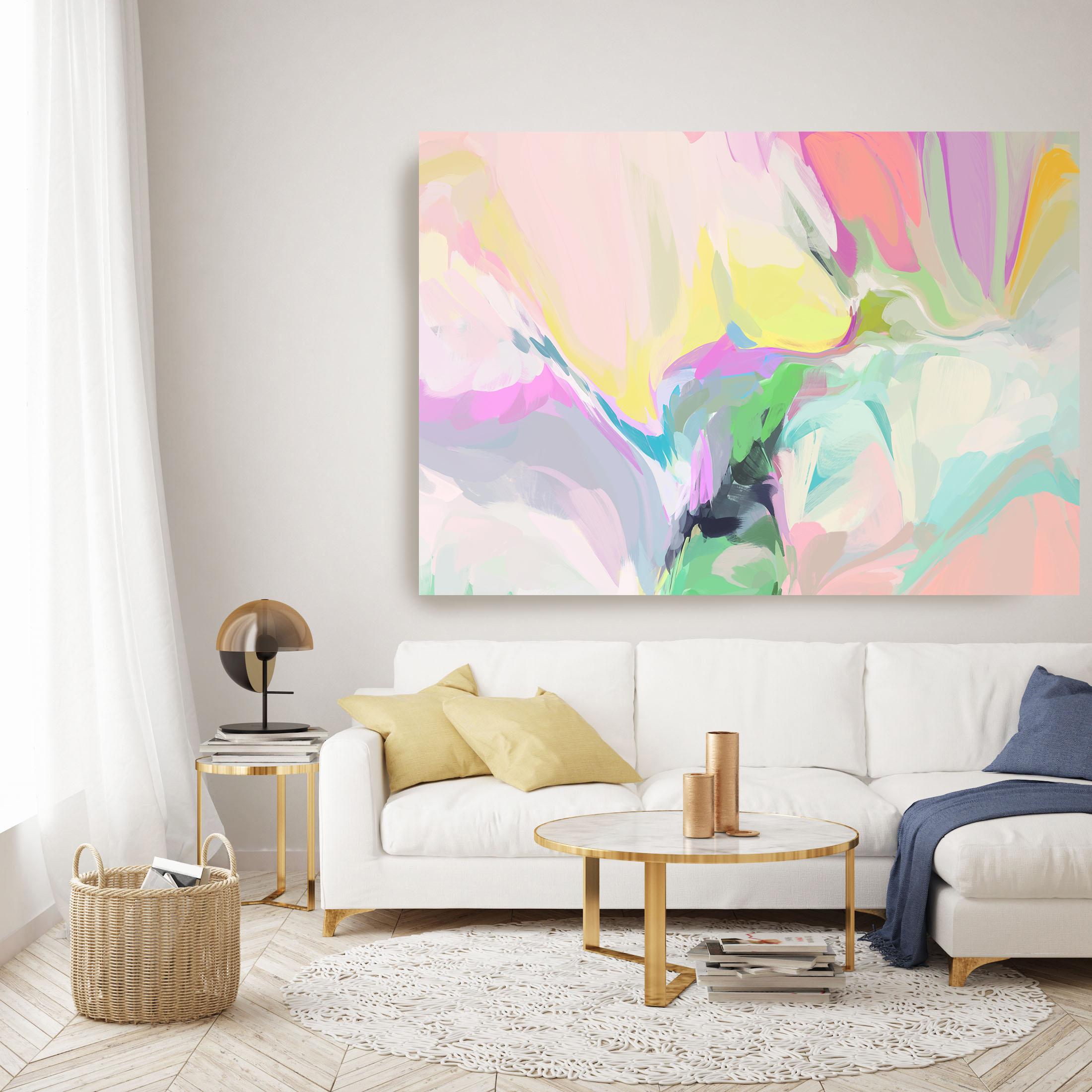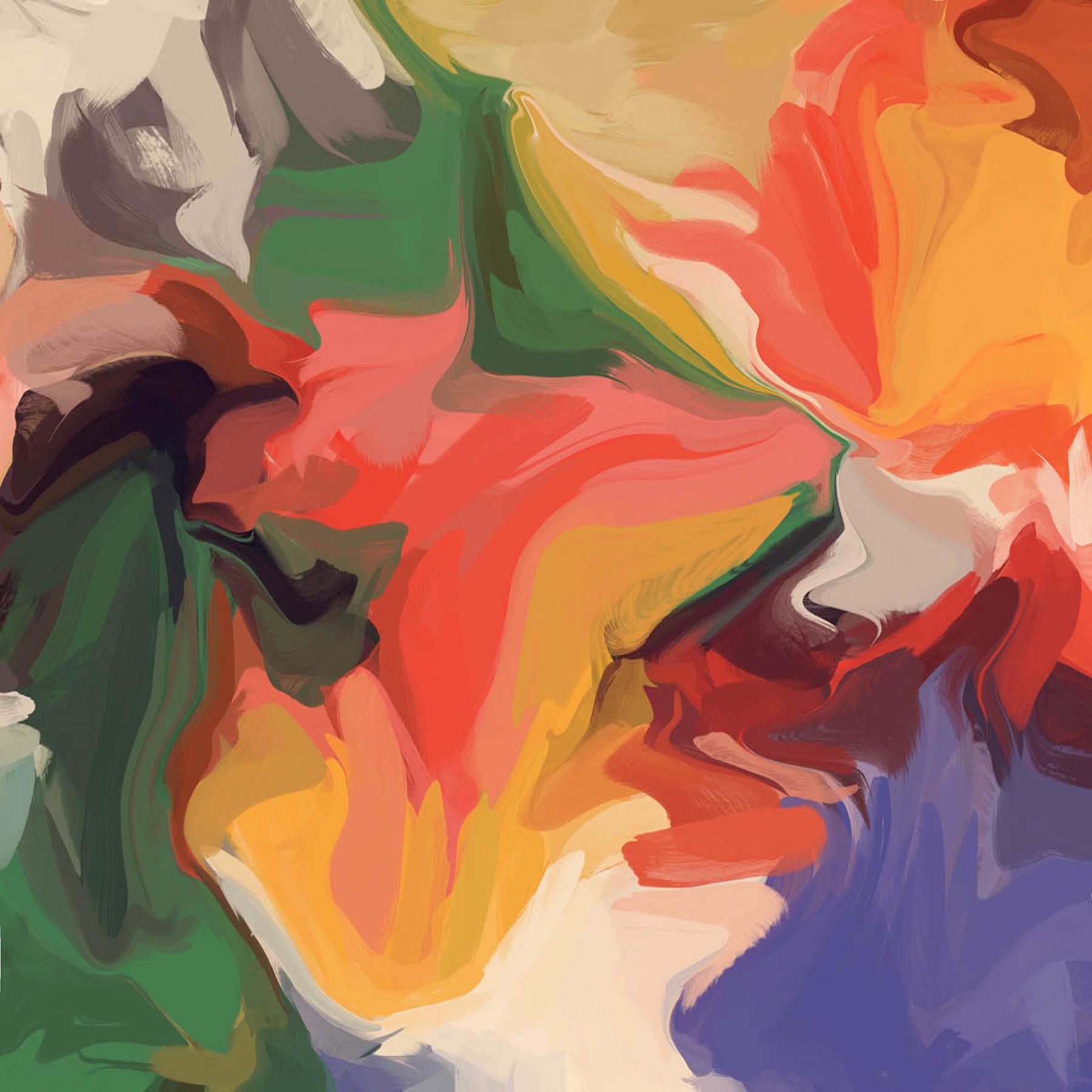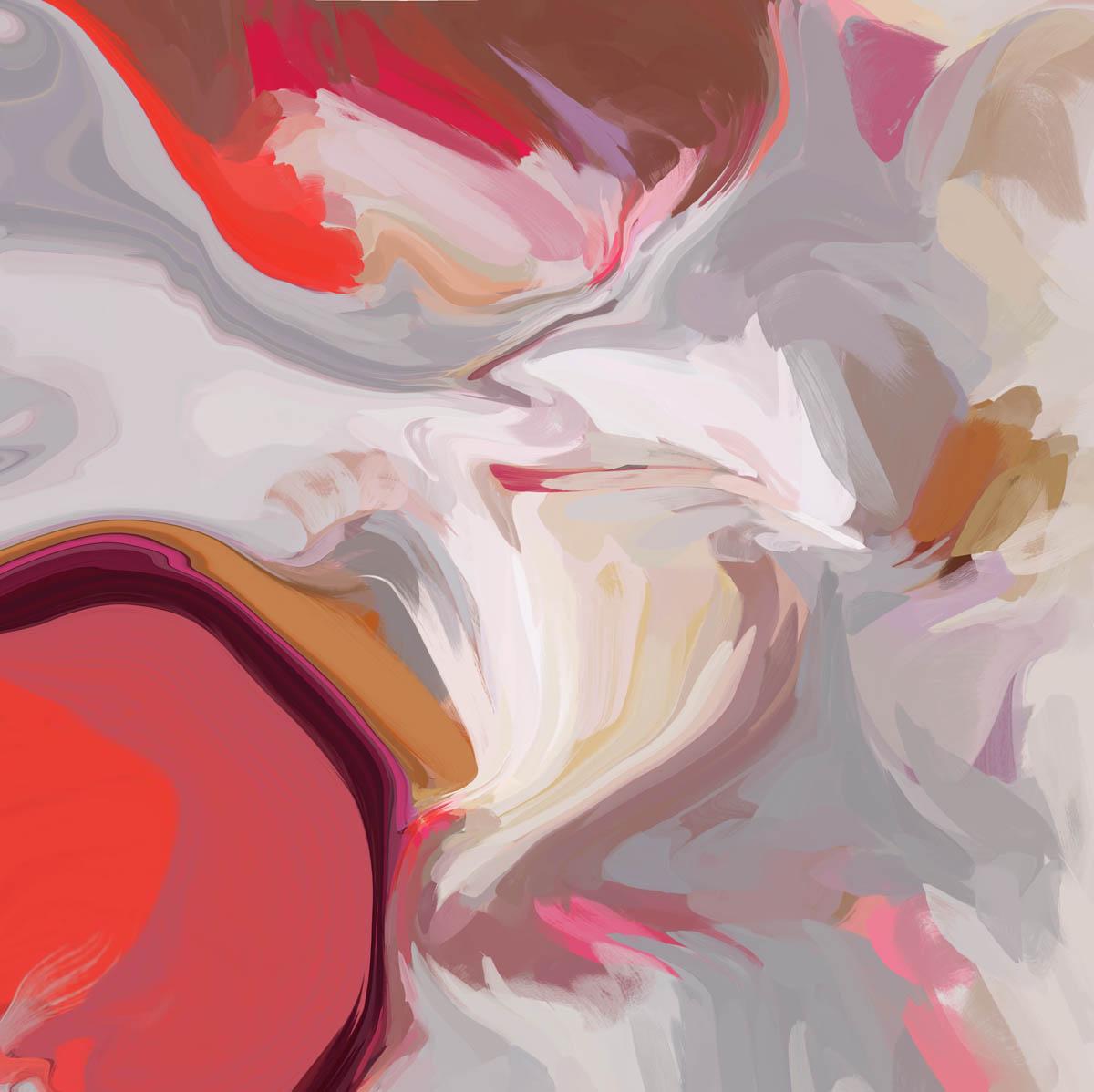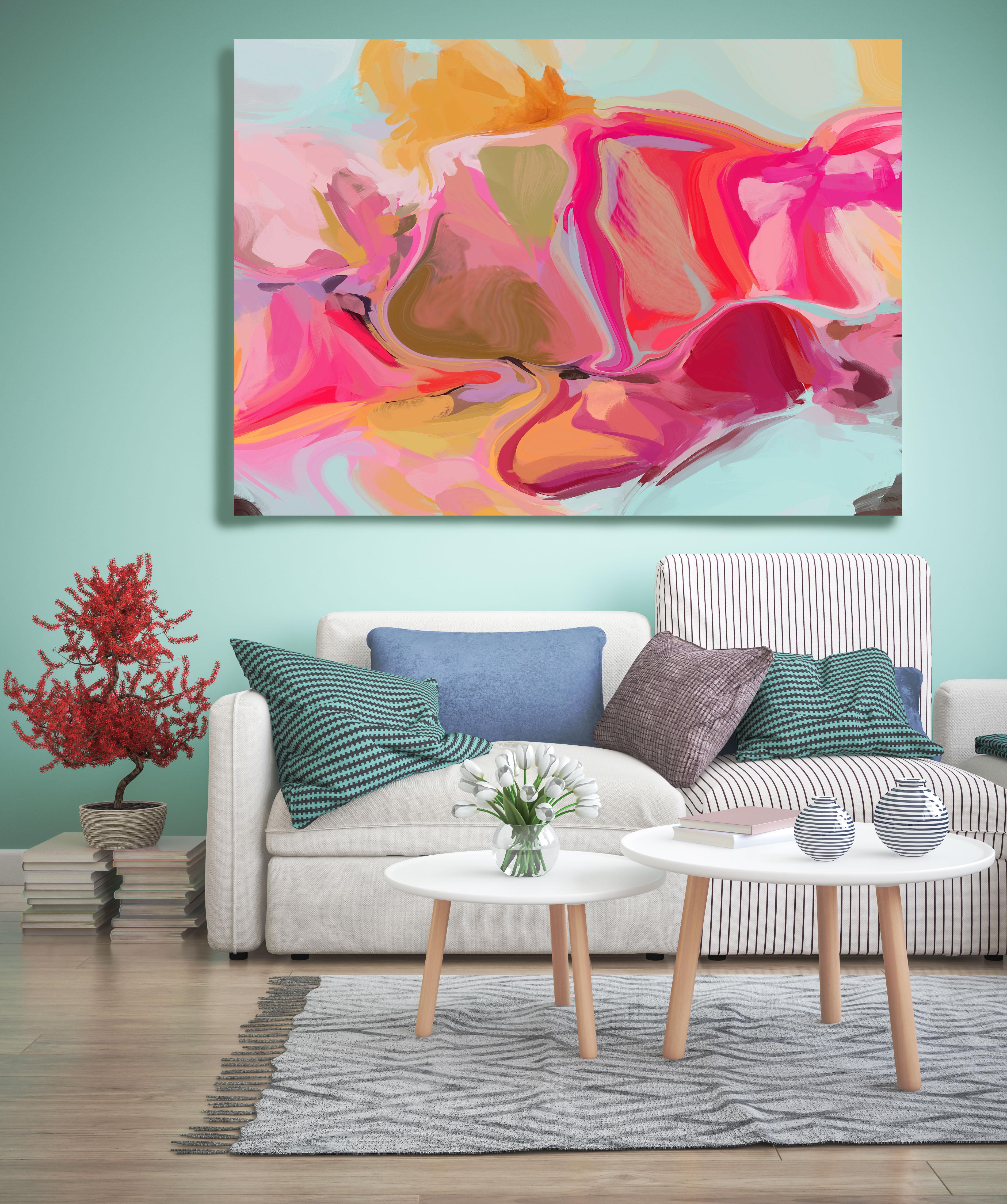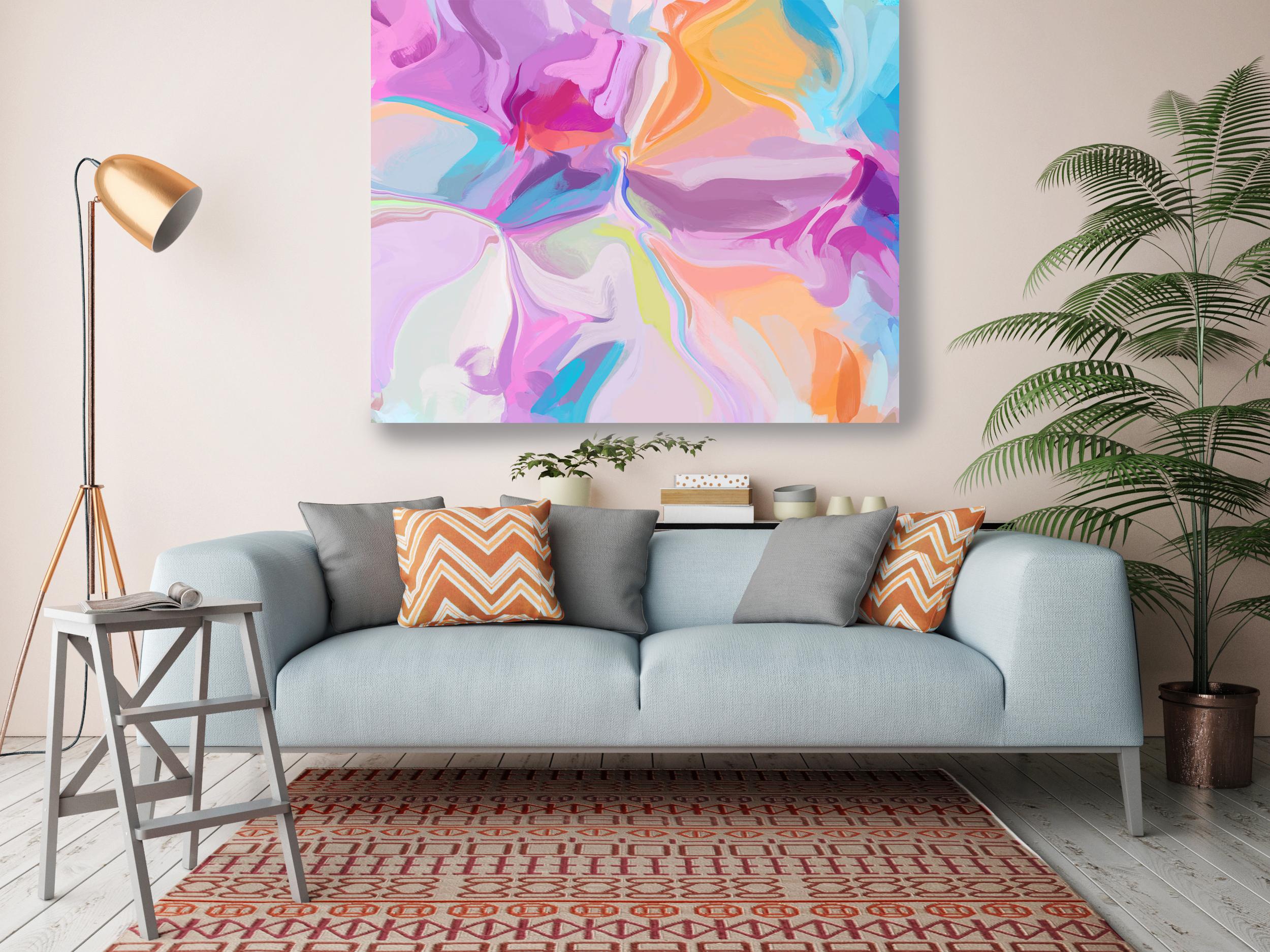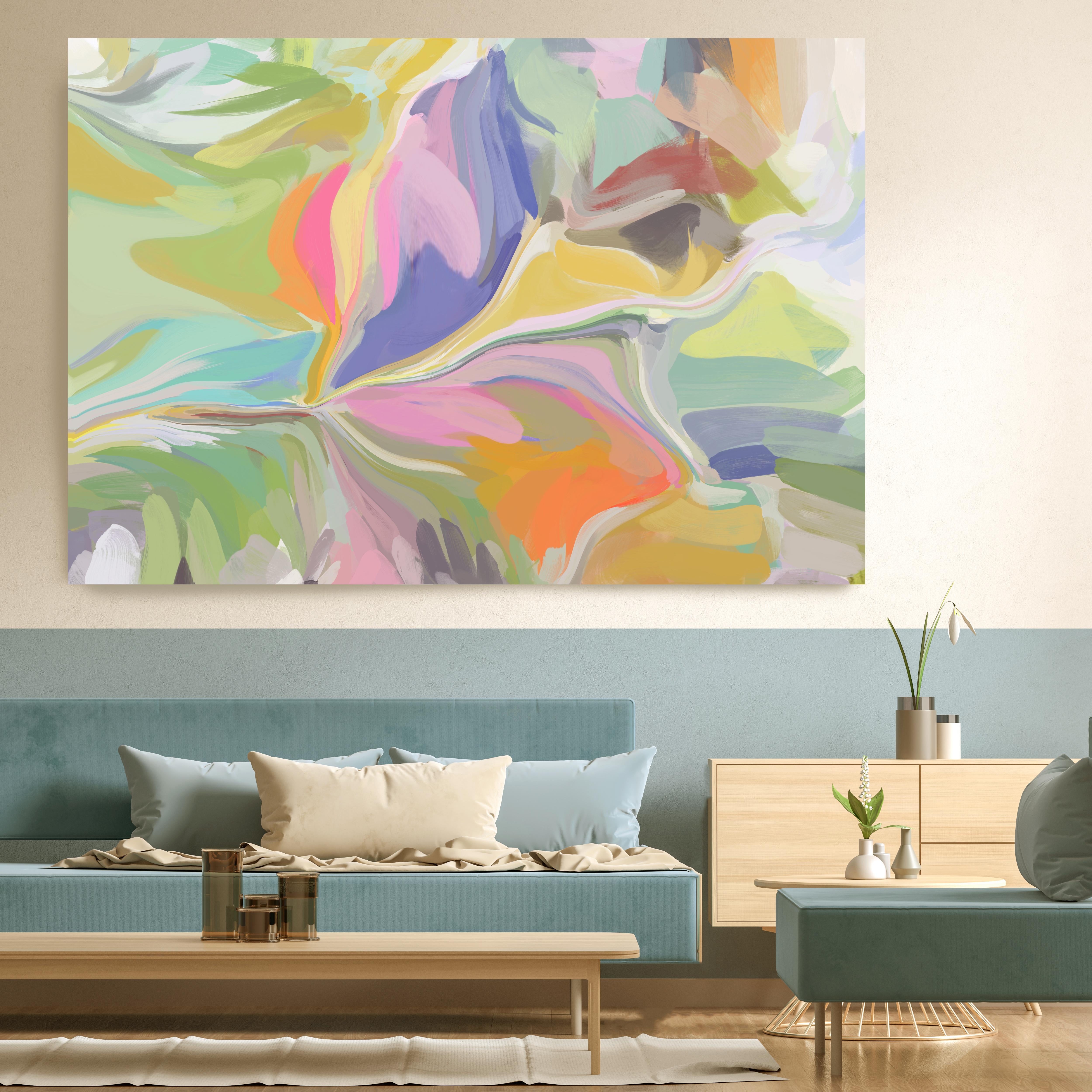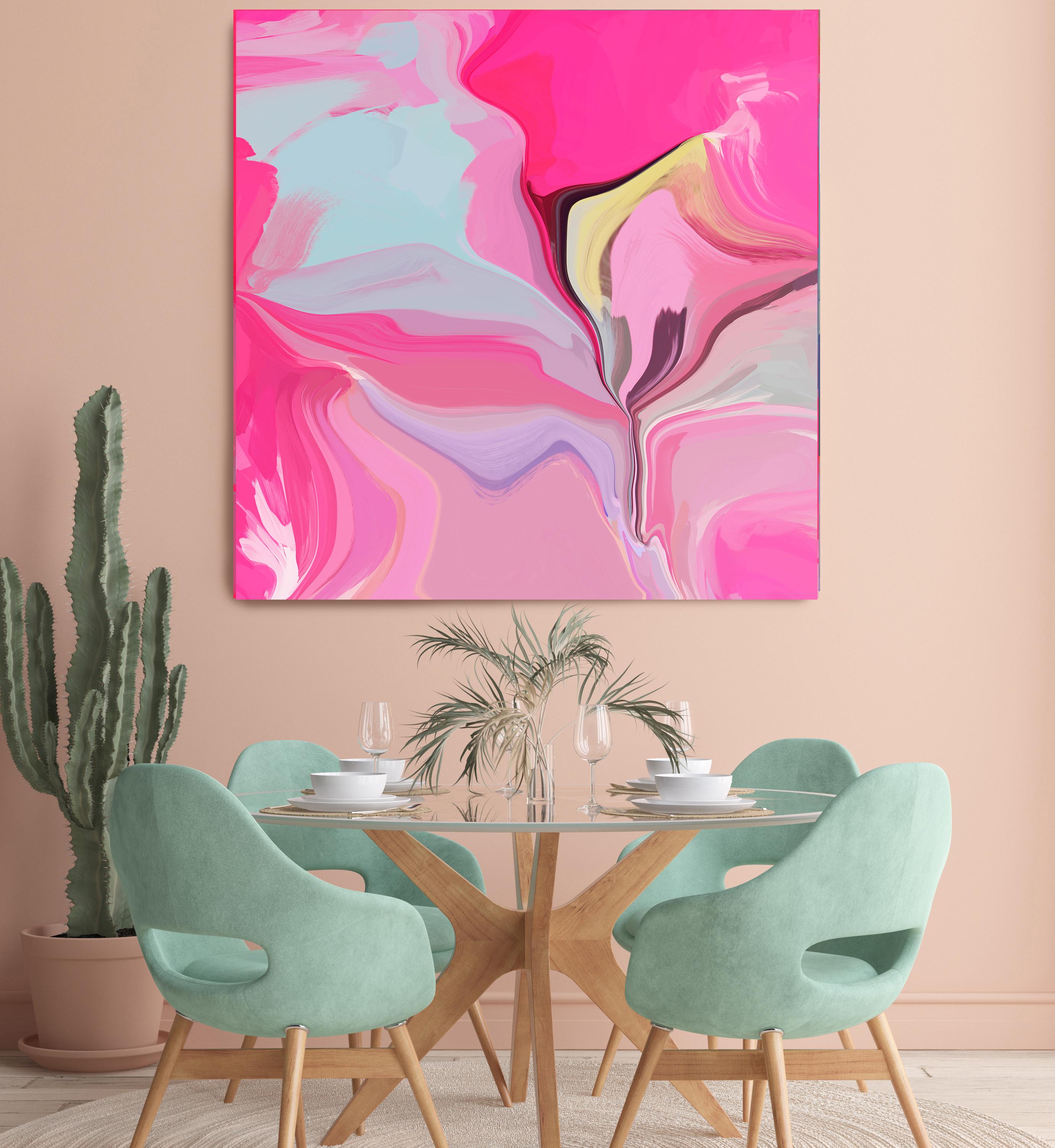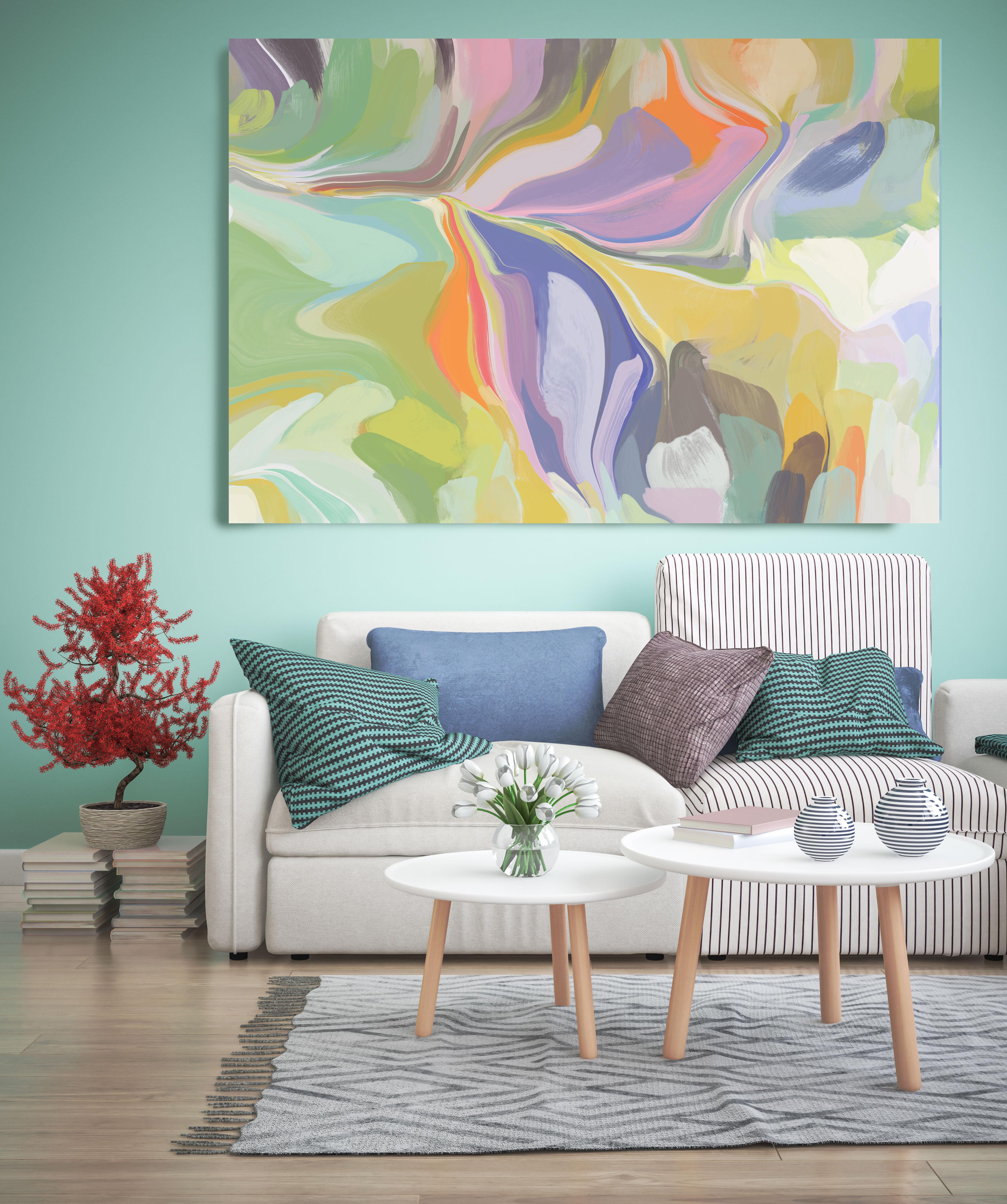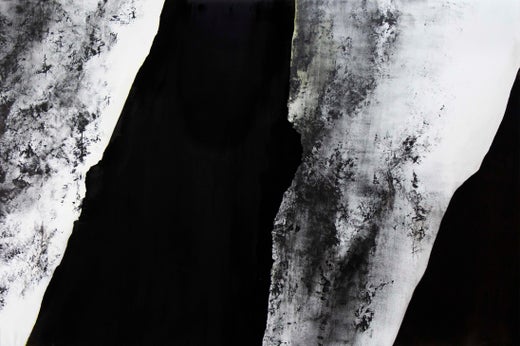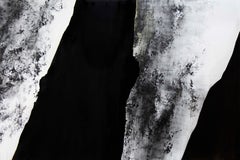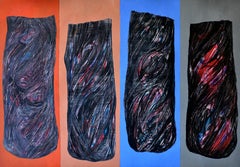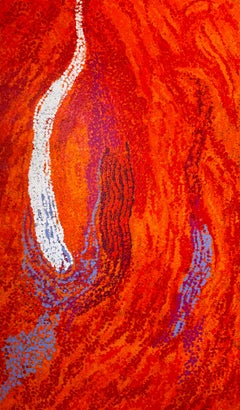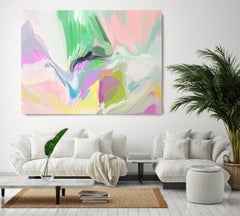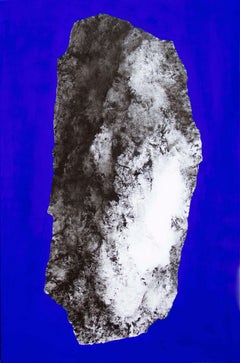
Bleu - Pierre VI
View Similar Items
Want more images or videos?
Request additional images or videos from the seller
1 of 6
Alexandre ValetteBleu - Pierre VI2021
2021
$8,000List Price
About the Item
- Creator:Alexandre Valette (1984, French, Swiss)
- Creation Year:2021
- Dimensions:Height: 66.93 in (170 cm)Width: 43.31 in (110 cm)
- Medium:
- Movement & Style:
- Period:
- Condition:
- Gallery Location:Miami, FL
- Reference Number:1stDibs: LU1368276842
Alexandre Valette has a master degree in Art History and is a complete artist, influenced by the work of the great masters. He explores from a young age drawing through the human anatomy and then becomes interested in the principles of Western composition to arrive at abstraction. Studying the pictorial techniques of the great masters of the Renaissance, Alexandre quickly produces his own binders according to traditional methods. Then, he sets out to discover his contemporaries aiming at exploring painting in all its potentialities. Alexandre Valette is both passionate about chemistry and craftsmanship. It is his personal relationships that forged him: a master poet, a color maker, a musician. Learning is everywhere. He understands that being a painter is knowing how to see. To see it is necessary to leave. Fascinated by the origins of civilizations as well as the first artifacts of man, he is a tireless traveler. While traveling the world, reading Shitao and the precepts of Chinese painting, his painting becomes more precise and he eliminates the unnecessary. His gesture becomes a breath. A dance. He is now presenting the Eolithe (Stone of Dawn) series. With this collection, Alexandre combines two themes that have always been part of him: monoliths and other Neolithic alignments as well as traditional Chinese painting. He focuses here on the sign, the trace, the remains. Starting from a canvas entirely covered with black oil, he comes to engrave, to remove the material in a unique gesture. "The gesture must be perfect, otherwise you just have to cover everything and start over". Therefore, he reverses the principle of the white canvas and interprets the unique line specific to oriental calligraphy to carve the illusion of a dawn stone. Alexandre Valette has won several awards including the gold medal of the Grand Concours International 2011 of the Fédération Nationale de la Culture Française and the bronze medal of the Salon des Beaux-Arts de Paris in 2016. He has been exhibited in various galleries including Galerie Natacha Dassault and more recently at Gauchet Fine Arts. His works have joined many private collections.
About the Seller
5.0
Vetted Professional Seller
Every seller passes strict standards for authenticity and reliability
Established in 2011
1stDibs seller since 2012
74 sales on 1stDibs
Typical response time: 1 hour
Authenticity Guarantee
In the unlikely event there’s an issue with an item’s authenticity, contact us within 1 year for a full refund. DetailsMoney-Back Guarantee
If your item is not as described, is damaged in transit, or does not arrive, contact us within 7 days for a full refund. Details24-Hour Cancellation
You have a 24-hour grace period in which to reconsider your purchase, with no questions asked.Vetted Professional Sellers
Our world-class sellers must adhere to strict standards for service and quality, maintaining the integrity of our listings.Price-Match Guarantee
If you find that a seller listed the same item for a lower price elsewhere, we’ll match it.Trusted Global Delivery
Our best-in-class carrier network provides specialized shipping options worldwide, including custom delivery.More From This Seller
View AllNoir - Pierre I
Located in Miami, FL
Alexandre Valette holds a master's degree in Art History and is an artist with multiple artistic practices. He has been exploring drawing since his y...
Category
2010s Contemporary Abstract Paintings
Materials
Canvas, Ink, Acrylic
Untitled
By Jean Sanglar
Located in Miami, FL
Jean Sanglar was born in France in 1926. He draws with taste and talent from an early age, however, his family will only consider this a mere hobby. After studying law, he later took...
Category
Late 20th Century Neo-Expressionist Abstract Paintings
Materials
Mixed Media, Oil Pastel
Tornado
By Patrice Breteau
Located in Miami, FL
Tornado is a black painting made by Patrice Breteau, a French contemporary artist. Breteau creates relief, texture and gives a living aspect to his mixed media pieces by using variou...
Category
20th Century Contemporary Figurative Paintings
Materials
Acrylic, Canvas, Mixed Media
Ngayuku Kgura (My Country)
By Yannima Tommy Watson
Located in Miami, FL
Yannima Tommy Watson is a Pitjantjatjara artist born around the 1930s, in the bush some 44km west of the small isolated community of Irrunytju. Not yet very well known to the French public, despite his participation in the architectural project of the Musée du Quai Branly, Tommy Watson is nevertheless often considered the greatest living Aboriginal artist.
Like many aborigines of his generation, he lived a traditional, nomadic or semi-nomadic life before his contact with Western civilization; then he will occupy the only jobs that the Aborigines find: herdsmen (until Yuendumu), laborers for the construction of infrastructures in the desert. Throughout this period he became familiar with his "country", a harsh region, and deepened his knowledge, both profane and sacred, relating to Dreams and Dreamtimes, to the connections between sacred sites and the Ancestors. He will even work in Papunya, where the artistic movement started. But the Pijantjarra are intransigent with tradition…no question at this time of revealing the motives and the secret stories.
The North of South Australia, the region where he is from, was touched by the pictorial movement only at the very beginning of the 2000s. In 2001, Tommy began his career as an artist in Irrunytju (Wingellina). He is a young artist… He learns by observing other painters and draws on the experiences of a long life and on the exceptional knowledge he has stored up. But quickly he will find his way, a radically new style where color plays a major role. Very quickly, the iconography now well known by the artists of Yuendumu, or the Western Desert, Balgo or Lajamanu disappeared. The symbols are no longer there. As Rover Thomas, Emily Kame or Paddy Bedford had done before him, this is a real artistic revolution. For Tommy, it is not a question of describing his Dream (Caterpillar), the routes taken by the Ancestors. He concentrates on a site, a story, sometimes very profane, the memory of a meeting, of a hunting party, tries to condense his memories, the information of which he is the depositary, to add a poetic touch to it, sometimes melancholy, and this gives a painting with a very abstract aspect. It is a painting where the emotion is very present, undoubtedly less cerebral than the art of the neighbors of the north the Pintupi, like Ronnie Tjampitjinpa, George...
Category
2010s Contemporary Abstract Paintings
Materials
Linen, Cotton Canvas, Acrylic
Pikarli - My Country
By Yannima Tommy Watson
Located in Miami, FL
Yannima Tommy Watson is a Pitjantjatjara artist born around the 1930s, in the bush some 44km west of the small isolated community of Irrunytju. Not yet very well known to the French public, despite his participation in the architectural project of the Musée du Quai Branly, Tommy Watson is nevertheless often considered the greatest living Aboriginal artist.
Like many aborigines of his generation, he lived a traditional, nomadic or semi-nomadic life before his contact with Western civilization; then he will occupy the only jobs that the Aborigines find: herdsmen (until Yuendumu), laborers for the construction of infrastructures in the desert. Throughout this period he became familiar with his "country", a harsh region, and deepened his knowledge, both profane and sacred, relating to Dreams and Dreamtimes, to the connections between sacred sites and the Ancestors. He will even work in Papunya, where the artistic movement started. But the Pijantjarra are intransigent with tradition…no question at this time of revealing the motives and the secret stories.
The North of South Australia, the region where he is from, was touched by the pictorial movement only at the very beginning of the 2000s. In 2001, Tommy began his career as an artist in Irrunytju (Wingellina). He is a young artist… He learns by observing other painters and draws on the experiences of a long life and on the exceptional knowledge he has stored up. But quickly he will find his way, a radically new style where color plays a major role. Very quickly, the iconography now well known by the artists of Yuendumu, or the Western Desert, Balgo or Lajamanu disappeared. The symbols are no longer there. As Rover Thomas, Emily Kame or Paddy Bedford had done before him, this is a real artistic revolution. For Tommy, it is not a question of describing his Dream (Caterpillar), the routes taken by the Ancestors. He concentrates on a site, a story, sometimes very profane, the memory of a meeting, of a hunting party, tries to condense his memories, the information of which he is the depositary, to add a poetic touch to it, sometimes melancholy, and this gives a painting with a very abstract aspect. It is a painting where the emotion is very present, undoubtedly less cerebral than the art of the neighbors of the north the Pintupi, like Ronnie Tjampitjinpa, George...
Category
2010s Contemporary Abstract Paintings
Materials
Cotton Canvas, Acrylic, Linen
Tjintjintjin
By Walangkura Napanangka
Located in Miami, FL
As one of the last generation to remember a childhood lived in the desert hunting and gathering with her family, Walangkura Napanangka's paintings recall the stories of country and the location of specific sites in her traditional homeland west of the salt lake of Karrkurutinjinya (Lake Macdonald).
Born around 1946, at Tjitururrnga west of Kintore, in the remote and arid country between the Northern Territory and Western Australia, she lived with her father Rantji Tjapangati and mother Inyuwa Nampitjinpa and later, while still a teenager, travelled by foot with her family over the hundreds of kilometres from their remote desert home eventually joining Uta Uta Tjangala's group as they walked in to the settlements of Haasts Bluff and then Papunya.
The lure of settlement life with its promise of plentiful food and water belied the harsh conversion they would make to an alien lifestyle with its many problems and unfamiliar demands. The upheaval however, was ameliorated to some degree by the proximity of her immediate family including her mother Inyuwa, adoptive father Tutuma Tjapangati, and sister Pirrmangka Napanangka (now deceased) all of whom became artists.
Relocated to the community of Kintore in 1981 when the outstation movement began, Walangkura participated in the historic women's collaborative painting project (1994) that was initiated by the older women as a means of re-affirming their own spiritual and ancestral roots. It was a time of specifically female singing, ceremony and painting, away from the gaze of outsiders and men folk. The huge and colourful canvases that emerged from the women's camp were 'alive with the ritual excitement and narrative intensity of the occasion' (Johnson 2000: 197).
Within a year, Papunya Tula Artists, now established at Kintore, had taken on many of these women as full-time artists, revitalising the company after the deaths of many of the original 'painting men'. While individual women forged their own stylistic trajectory, these paintings were immediately distinguishable from the men's more cerebral and symmetrical style. They radiated an exuberant and vibrant energy, the felt heart-beat of women's affinity to country and spirit.
Walangkura's early works, created from 1996 onward, are characterized by masses of small markings and motifs covering large areas of canvas. Her favorite colour, a deep sandy orange predominates, accentuated against more somber blacks and reds and dusky greens or yellows. More recent works show a gestural quality though still tightly packed with an intensity of geometric line work representing sandhills. In a sense this provides a strong visual and contextual link to the men's linear style as exemplified by the works of George Tjungurrayi...
Category
2010s Contemporary Abstract Paintings
Materials
Linen, Cotton Canvas, Acrylic
You May Also Like
Two Kinds of Life 2 - 21st Century, Contemporary, Abstract Painting, Acrylic
By Dunmade Ayegbayo
Located in Ibadan, Oyo
Shipping Procedure
FREE Shipping Worldwide
Ships in a well-protected tube from Nigeria
This work is unique, this is not a print or other type of copy.
Accompanied by a Certificate of Authenticity (Issued by the Gallery)
"The Two Kinds of Life" is a thought-provoking artwork that eloquently portrays the intricate tapestry of existence, emphasizing the interconnected nature of all living things. The painting explores profound themes such as the value of life, the significance of our actions, and the inevitability of mortality.
In this artwork, the artist uses a blend of vivid and muted colours to represent the dual aspects of life: vibrancy and vitality on one hand, and the somber inevitability of death on the other. The vibrant areas of the painting might illustrate flourishing life, symbolizing joy, growth, and the potential for positive impact. These sections are interwoven with more subdued tones, representing the finite nature of life and the quiet approach to the end.
Through "The Two Kinds of Life," the artist conveys a message about the importance of making a meaningful impact while we are alive. It suggests that despite the inevitable end, the true measure of our lives lies in the legacy we leave behind, the lives we touch, and the positive changes we bring about in our world. This duality invites viewers to reflect on their own lives and consider how they can contribute to the world in a meaningful way before their time comes to an end.
In essence, "The Two Kinds of Life" is a poignant reminder of our mortality and a call to action. It urges us to appreciate the preciousness of life, to live fully, and to strive to make a positive difference, ensuring that the impact of our existence reverberates long after we are gone. This artwork not only captures the beauty and complexity of life but also serves as an inspiration to embrace our capacity for change and to live with intention and purpose.
About Artist
Being an impressionist artist, born in a small town in Osun state, Nigeria, Dunmade Ayegbayo...
Category
21st Century and Contemporary Contemporary Abstract Paintings
Materials
Canvas, Ink, Mixed Media, Acrylic
Two Kinds of Life 1 - 21st Century, Contemporary, Abstract Painting, Acrylic
By Dunmade Ayegbayo
Located in Ibadan, Oyo
Shipping Procedure
FREE Shipping Worldwide
Ships in a well-protected tube from Nigeria
This work is unique, this is not a print or other type of copy.
Accompanied by a Certificate of Authenticity (Issued by the Gallery)
"The Two Kinds of Life" is a thought-provoking artwork that eloquently portrays the intricate tapestry of existence, emphasizing the interconnected nature of all living things. The painting explores profound themes such as the value of life, the significance of our actions, and the inevitability of mortality.
In this artwork, the artist uses a blend of vivid and muted colours to represent the dual aspects of life: vibrancy and vitality on one hand, and the somber inevitability of death on the other. The vibrant areas of the painting might illustrate flourishing life, symbolizing joy, growth, and the potential for positive impact. These sections are interwoven with more subdued tones, representing the finite nature of life and the quiet approach to the end.
Through "The Two Kinds of Life," the artist conveys a message about the importance of making a meaningful impact while we are alive. It suggests that despite the inevitable end, the true measure of our lives lies in the legacy we leave behind, the lives we touch, and the positive changes we bring about in our world. This duality invites viewers to reflect on their own lives and consider how they can contribute to the world in a meaningful way before their time comes to an end.
In essence, "The Two Kinds of Life" is a poignant reminder of our mortality and a call to action. It urges us to appreciate the preciousness of life, to live fully, and to strive to make a positive difference, ensuring that the impact of our existence reverberates long after we are gone. This artwork not only captures the beauty and complexity of life but also serves as an inspiration to embrace our capacity for change and to live with intention and purpose.
About Artist
Being an impressionist artist, born in a small town in Osun state, Nigeria, Dunmade Ayegbayo...
Category
21st Century and Contemporary Contemporary Abstract Paintings
Materials
Canvas, Acrylic, Ink, Mixed Media
Modern Flow Painting Mixed Media Canvas 38 x 56" The world before me
By Irena Orlov
Located in Sherman Oaks, CA
One of a kind Mixed Medium on Canvas
Artwork: Original abstract mixed media work on canvas, which combines new media - digital original hand painting, printed on canvas, then hand p...
Category
2010s Contemporary Interior Paintings
Materials
Canvas, Varnish, Archival Ink, Acrylic, Mixed Media
Contemporary Flow Painting Mixed Media Canvas 38x56" The world before me
By Irena Orlov
Located in Sherman Oaks, CA
One of a kind Mixed Medium on Canvas
Artwork: Original abstract mixed media work on canvas, which combines new media - digital original hand painting, printed on canvas, then hand p...
Category
2010s Contemporary Interior Paintings
Materials
Canvas, Varnish, Archival Ink, Acrylic, Mixed Media
Abstract Bright and Sunshine Bohemian Green Mixed Media on Canvas 45x45"
By Irena Orlov
Located in Sherman Oaks, CA
One of a kind Mixed Medium on Canvas
Artwork: Original abstract mixed media work on canvas, which combines new media - digital original hand painting, printed on canvas, then hand p...
Category
2010s Contemporary Abstract Paintings
Materials
Canvas, Varnish, Archival Ink, Acrylic, Mixed Media
Abstract Green Abstract Painting Mixed Media Canvas 40x60" Wrapped in Steam
By Irena Orlov
Located in Sherman Oaks, CA
One of a kind Mixed Medium on Canvas
Artwork: Original abstract mixed media work on canvas, which combines new media - digital original hand painting, printed on canvas, then hand p...
Category
2010s Contemporary Interior Paintings
Materials
Canvas, Varnish, Archival Ink, Acrylic, Mixed Media
